How reliable is point-of-care testing measurements?

We investigated the agreement between the latest generation blood gas analyzer and central laboratory measurements of electrolytes, bicarbonate, hemoglobin, hematocrit, and glucose” Allardet-Servent et al (2017). Abstract: INTRODUCTION: Rapid detection of abnormal biological values using point-of-care (POC) testing allows clinicians to promptly initiate therapy; however, there are concerns regarding the reliability of POC measurements. We […]
Handheld ultrasound is a safe and useful aid in cannulation of dialysis access
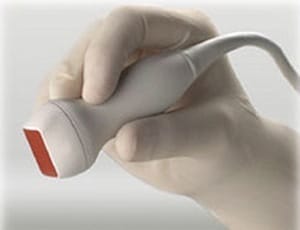
Handheld ultrasound is a safe and useful aid in cannulation of dialysis access” Kumbar et al (2017). Abstract: Background: Infiltrations from cannulation result in significant morbidity including loss of hemodialysis (HD) vascular access (VA). Cannulation is dependent on personnel skill and VA characteristics. Surface marking of VA lacks real-time information and traditional ultrasound (US) devices […]
What is the association between parenteral nutrition and CLABSI rates?

PN remains a significant risk factor for CLABSIs; further work is needed to identify effective strategies to reduce rates of CLABSI among patients receiving PN” Fonseca et al (2017). Abstract: BACKGROUND: Parenteral nutrition (PN) administered via central venous catheter has been identified as an independent risk factor for central line-associated bloodstream infections (CLABSIs). The aim of […]
Vein visualization device for successful peripheral IV catheter placement

Peripheral intravenous catheterization using vein visualization device support reduces the number of attempts per patient and the operation duration but increases the rate of first stick success” Demir and Inal (2017). Abstract: BACKGROUND: Peripheral intravenous catheterization is one of the most frequently encountered medical procedures for hospitalized children and is one that can often be […]
Placing internal jugular dialysis catheter tips in the inferior vena cava
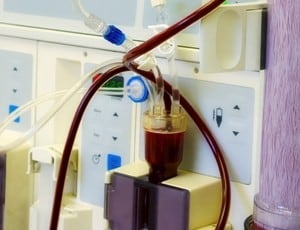
This study suggests that exchanging the catheter and placing the tip in the IVC is effective and safe in certain situations especially when the tip placement in the conventional position (i.e. the right atrium) does not work well” Mayer et al (2017). Abstract: PURPOSE: To assess the efficacy and safety of placing the tip of […]
Venipuncture pain assessment tools for preschool-aged children
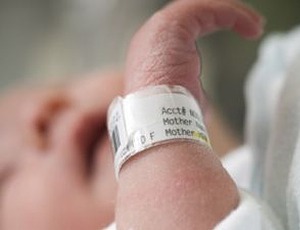
This study evaluated two novel simplified pain assessment tools for preschool-aged children undergoing blood sampling. These scales demonstrated good validity and feasibility compared with the Faces Pain Scale – Revised, suggesting these simplified pain scales may have a role in clinical practice for children as young as 4 years” Emmott et al (2017). Abstract: There […]
How often and why do implantable ports flip?
The incidence of port inversion without suture fixation of the port base to the pocket is extremely low. The present study shows differences in inversion incidence based on port design” Etezadi and Trerotola (2016). Abstract: PURPOSE: To compare incidence of port inversion among different types of implantable venous access devices. MATERIALS AND METHODS: Records of […]
Reasons for removal of totally implantable venous devices in children?
“The aim of this study is to determine the reasons for port removal. The port catheters, implanted and removed in patients between January 2000 and June 2013 were evaluated retrospectively” Kılıç et al (2016).
Complication and removal of totally implantable venous access port
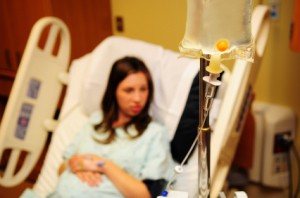
The aim of this study is to investigate the impact of the time interval between port placement and initiation of chemotherapy and the neutropenia-inducing potential of the chemotherapy administered upon complication-related port removal” Kakkos et al (2016). Abstract: BACKGROUND: Totally implantable venous access port systems are widely used in oncology, with frequent complications that sometimes […]
Central venous catheter-related tachycardia in the newborn

We present a case of a preterm neonate with a preexisting umbilical venous catheter (UVC), who then developed a supraventricular tachycardia (SVT)” Amer et al (2016). Abstract: Central venous access is an important aspect of neonatal intensive care management. Malpositioned central catheters have been reported to induce cardiac tachyarrhythmia in adult populations and there are […]
Extent of needleless connector blood contamination after routine flushing
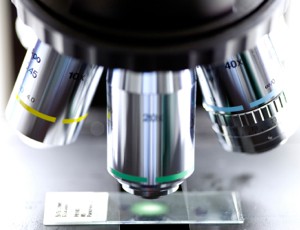
The aim of this study was to find the magnitude of blood contamination of PIV catheter hub after routine flushing” Krishnamurthy et al (2016). Abstract: INTRODUCTION: Peripheral Intravenous Catheters (PIV) are extensively used in sick neonates for administration of medicines and nutrition. When these PIVs are used on intermittent basis, they are flushed with saline […]
Suture or glue for skin closure after implantable port placement
To compare early outcomes of skin closure with octyl cyanoacrylate skin adhesive versus subcuticular suture closure” Martin et al (2017). Abstract: PURPOSE: To compare early outcomes of skin closure with octyl cyanoacrylate skin adhesive versus subcuticular suture closure. [ctt link=”j6bdQ” template=”1″]ReTweet if useful… Suture or glue for skin closure after implantable port placement https://ctt.ec/j6bdQ+ @ivteam […]
Aesthetic considerations for implantable port placement
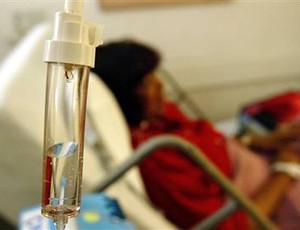
The aim of this technical note is to report our revised surgical technique for TIVAD placement” Liberale (2016). Abstract: Major progress has been made in breast cancer reconstruction surgery. The standard technique for totally implanted vascular access device (TIVAD) implantation generally requires an incision for port insertion on the anterior part of the thorax that […]
Considerations for implantable port placement in a neutropenic patients?

To determine if severe neutropenia at the time of chest port insertion is a risk factor for port removal and central catheter-associated bloodstream infection (CCABSI) in pediatric patients” Hoss et al (2016). Abstract: PURPOSE: To determine if severe neutropenia at the time of chest port insertion is a risk factor for port removal and central […]
Techniques to overcome difficult implantable port insertion

The monorail technique is helpful to overcome the difficult anatomical course via left internal jugular vein in implantable port insertion” Kim et al (2016). Abstract: PURPOSE: The study aimed to introduce a monorail technique to overcome difficult anatomical course via left internal jugular vein in implantable port insertion. [ctt link=”0UsKb” template=”1″]ReTweet if useful… Techniques to […]
Implantable port thrombosis rates in cancer patients
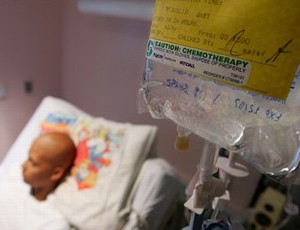
Implantable port thrombosis (IPT) in cancer patients is a relatively rare but severe complication” Dridi et al (2016). Abstract: OBJECTIVE: Implantable port thrombosis (IPT) in cancer patients is a relatively rare but severe complication. Several factors are reportedly associated with the occurrence of thrombosis. We aimed to describe the prevalence and the anatomoclinical features of […]
PICC complications and a negative impact on neonatal body weight gain?
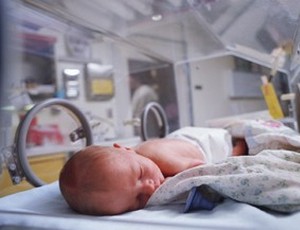
The aim of this study was to determine the risk of PICC complications in NICU, and further identify the effects of PICC complications on body weight gain in premature infants” Wen et al (2017). Abstract: BACKGROUND AND OBJECTIVES: The placement of a peripherally inserted central venous catheter (PICC) is an essential procedure in neonatal intensive […]
Is a three-step hand rub technique as effective as the WHO six-step version?

The WHO six-step “how to hand rub” technique can be simplified to a 3-step procedure based on the reduction of bacterial counts on HCW’s hands achieved under experimental conditions” Tschudin-Sutter et al (2017). Abstract: Objectives: The World Health Organization (WHO) issued guidelines on hand hygiene recommending a six-step “how to hand rub” technique for applying […]
What is the future of intravenous fluid resuscitation in sepsis?
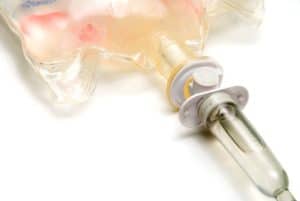
Fluid resuscitation continues to be recommended as the first-line resuscitative therapy for all patients with severe sepsis and septic shock” Byrne and Van Haren (2017). Abstract: Fluid resuscitation continues to be recommended as the first-line resuscitative therapy for all patients with severe sepsis and septic shock. The current acceptance of the therapy is based in […]
PICC line practices in neonatal intensive care units

Neonatal intensive care units (NICUs) commonly utilize peripherally inserted central catheters (PICCs) to provide nutrition and long-term medications to premature and full-term infants. However, little is known about PICC practices in these settings” Sharpe et al (2016). Abstract: BACKGROUND: Neonatal intensive care units (NICUs) commonly utilize peripherally inserted central catheters (PICCs) to provide nutrition and […]
Intraosseous infusion of Adenosine in an infant

In most cases, antecubital intravenous access can be established, and adenosine can be administered in a rapid and timely fashion. The role and administration of intraosseous adenosine are poorly established” Helleman et al (2017). Abstract: Supraventricular tachycardia is a common arrhythmia faced by emergency physicians in the pediatric population. In most cases, antecubital intravenous access […]
Distraction-based interventions for children undergoing venipuncture

Little is known about the effects of distraction techniques when undertaking medical procedures with hospitalized pediatric patients in Asian countries” Kuo et al (2016). Abstract: Little is known about the effects of distraction techniques when undertaking medical procedures with hospitalized pediatric patients in Asian countries. This study examined the effects of distraction interventions on behavioral […]
Occurrence of needlestick injuries in Northern India

To determine the occurrence of self-reported occupational exposures to these hazards and to know the prevalent practices following the exposure” Goel et al (2017). Abstract: INTRODUCTION: Occupational hazards such as accidental exposure to sharp, cuts, and splashes are common among health-care workers (HCWs). [ctt link=”eddoF” template=”1″]ReTweet if useful… Occurrence of needlestick injuries in Northern India […]
PICC use in acute myeloid leukaemia patients undergoing induction chemotherapy

The feasibility and safety of PICC for induction chemotherapy in acute myeloid leukaemia (AML) remain unclear” Chen et al (2016). Abstract: Increasingly, peripherally inserted central catheters (PICC) are applied in patients with haematological malignancies. The feasibility and safety of PICC for induction chemotherapy in acute myeloid leukaemia (AML) remain unclear. [ctt link=”101fU” template=”1″]ReTweet if useful… […]
Which comorbid conditions are risk factors for healthcare-associated infections?

To determine which comorbid conditions are considered causally related to central-line associated bloodstream infection (CLABSI) and surgical-site infection (SSI) based on expert consensus” Harris et al (2016). Abstract: OBJECTIVE: To determine which comorbid conditions are considered causally related to central-line associated bloodstream infection (CLABSI) and surgical-site infection (SSI) based on expert consensus. [ctt link=”sWL80″ template=”1″]ReTweet […]
What is the impact of antimicrobial lock solutions on CLABSI rates
The purpose of our study is to carry out a Bayesian network meta-analysis comparing the efficacy of different antimicrobial lock solutions (ALS) for prevention of catheter-related infections (CRI) in patients with hemodialysis (HD) and ranking these ALS for practical consideration” Zhang et al (2016). Abstract: PURPOSE: The purpose of our study is to carry out […]
Sweet solutions to reduce procedural pain in neonates

To review all trials evaluating sweet solutions for analgesia in neonates and to conduct cumulative meta-analyses (CMAs) on behavioral pain outcomes” Harrison et al (2017). Abstract: CONTEXT: Abundant evidence of sweet taste analgesia in neonates exists, yet placebo-controlled trials continue to be conducted. [ctt link=”95Na1″ template=”1″]ReTweet if useful… Sweet solutions to reduce procedural pain in […]
The role of the infusion nurse in monitoring antimicrobial therapy

The infusion nurse plays a vital role in administering, monitoring, and educating patients about parenteral antibiotics, while bridging communication between the patient and OPAT team” Percival (2017). Abstract: Outpatient parenteral antimicrobial therapy (OPAT) has become an increasingly common practice for the treatment of infections. The infusion nurse plays a vital role in administering, monitoring, and […]
Pharmacokinetics of Recombinant Factor VIII Fc fusion protein
These results suggest that prophylaxis with rFVIIIFc in patients with hemophilia A may allow less frequent prophylactic dosing while maintaining efficacy, with comparable prophylactic consumption” Schafer et al (2017). Abstract: Prophylaxis for hemophilia A with conventional factor VIII (FVIII) products requires frequent intravenous dosing, which may reduce adherence. Recombinant factor VIII Fc fusion protein (rFVIIIFc) […]
Preventing pediatric parenteral nutrition-associated liver disease
Pediatric parenteral nutrition-associated liver disease (PNALD) is typically defined as a decrease in bile flow that is independent of a mechanical obstruction and of any other underlying liver disease” Israelite (2017). Abstract: Pediatric parenteral nutrition-associated liver disease (PNALD) is typically defined as a decrease in bile flow that is independent of a mechanical obstruction and […]

